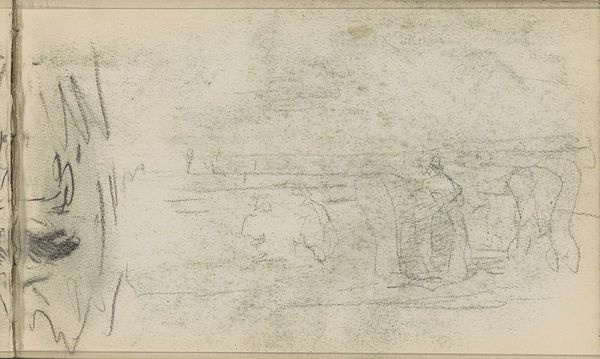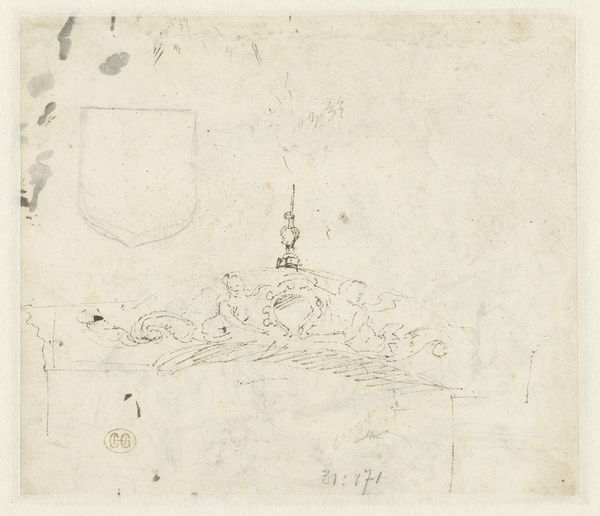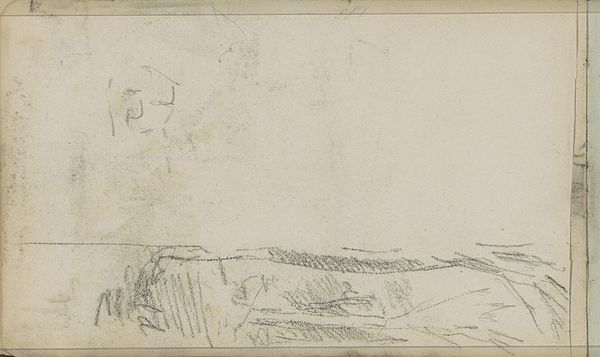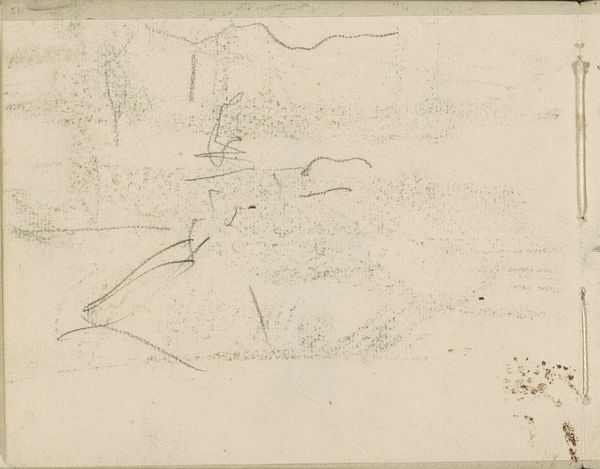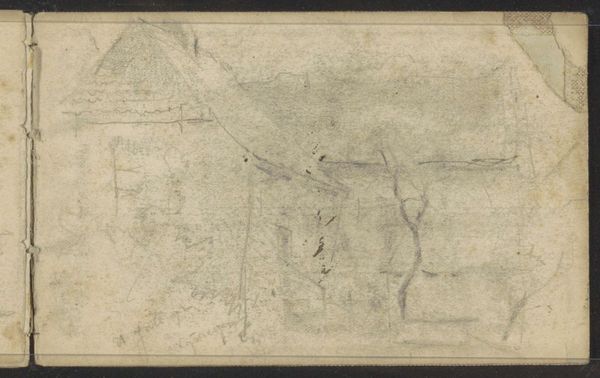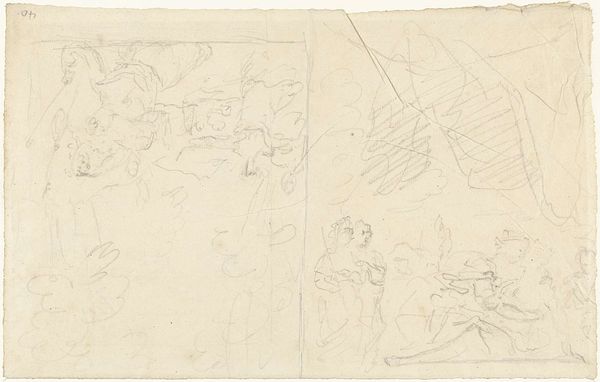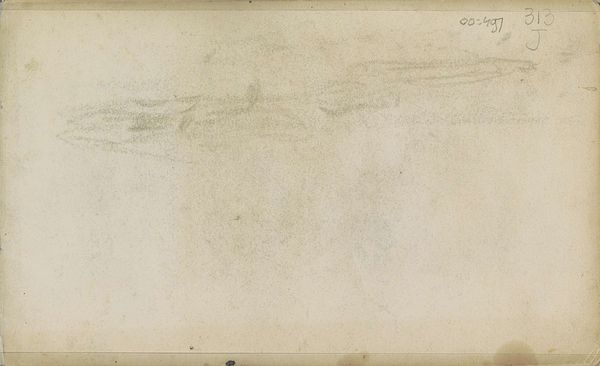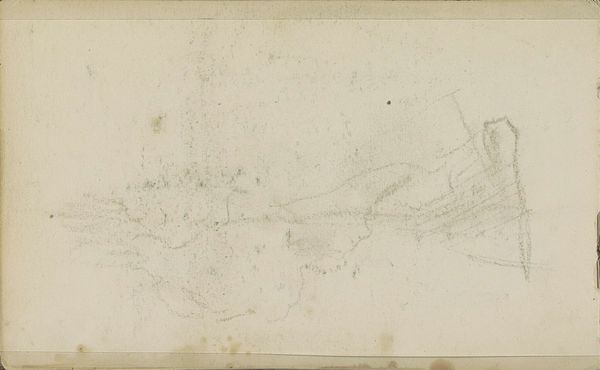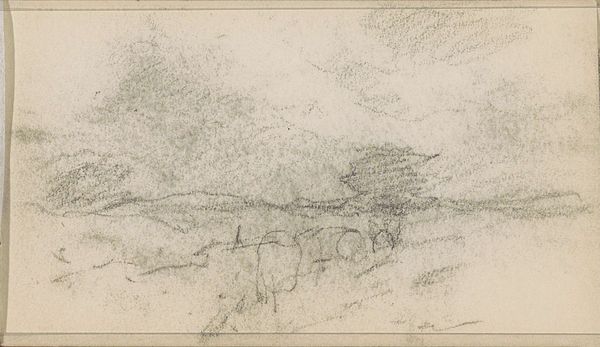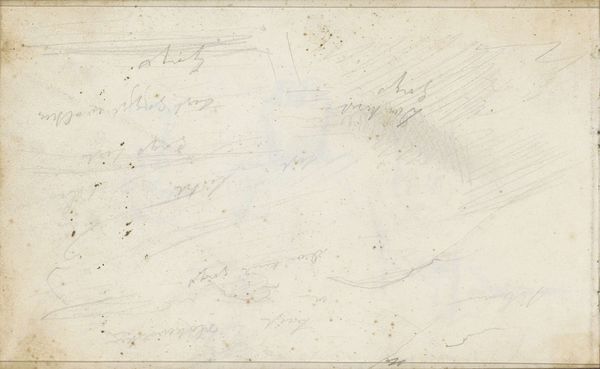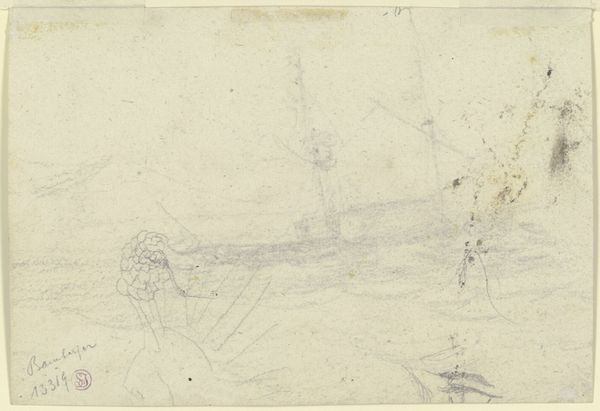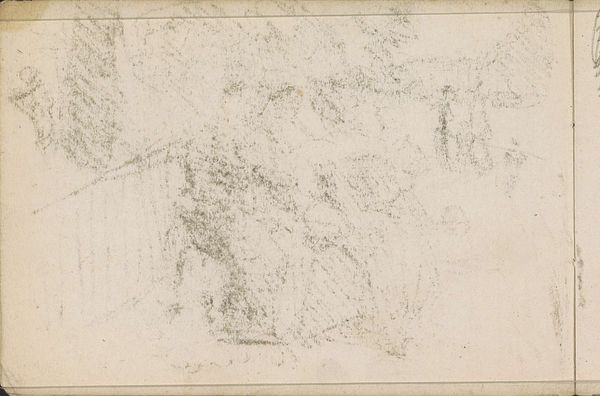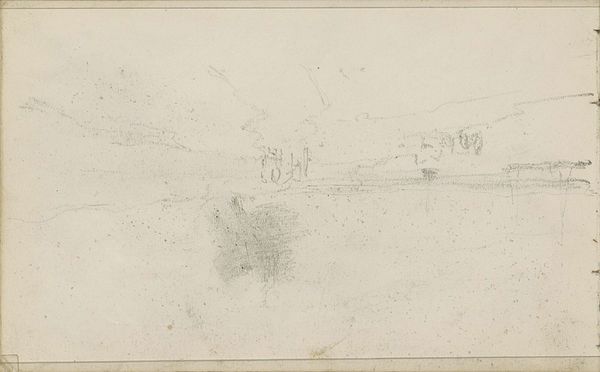
drawing, pencil
#
drawing
#
dutch-golden-age
#
pencil sketch
#
landscape
#
charcoal drawing
#
pencil
#
realism
Copyright: Rijks Museum: Open Domain
Editor: We're looking at Anton Mauve's "Landschap met knotwilgen" – or "Landscape with pollard willows" – a pencil drawing, created sometime between 1848 and 1888. It's currently held at the Rijksmuseum. There's something incredibly simple and sparse about this sketch; it almost feels like peering into someone's dream. What catches your eye most in this piece? Curator: That's a lovely way to put it. Dreams often are sparse aren’t they? What strikes me is the utter economy of line. Mauve's managed to evoke a whole landscape – the horizon, those quirky willows, even a sense of weather brewing – with just the barest whisper of pencil. It feels so immediate, like a direct transmission of his visual thought. I’m curious though: does the sketch-like quality take away from its impact in any way for you? Editor: Hmm, not really, maybe it even adds to it! Knowing it’s a sketch makes it feel more intimate, like we’re seeing the artist’s raw, unfiltered observation. The imprecision adds character. I almost feel the Dutch breeze... perhaps I'm being overly romantic? Curator: Oh, romanticism is perfectly valid here. Mauve, while considered part of the Hague School, definitely carried that late-Romantic sensitivity towards nature. And look at where he places you: slightly below the horizon. Did you notice that, you're standing *in* the landscape, right with those scrappy trees, exposed to the elements! Which also gives the drawing that powerful intimacy that you noticed. Makes you wonder what exactly grabbed his attention that day... Editor: It does make you wonder! This was really enlightening, I will not see pencil drawings in the same light going forward! Curator: Same here; the immediacy of the line and how it brings us *into* the artist’s experience, is something to truly cherish. Thanks for the fresh perspective.
Comments
No comments
Be the first to comment and join the conversation on the ultimate creative platform.
